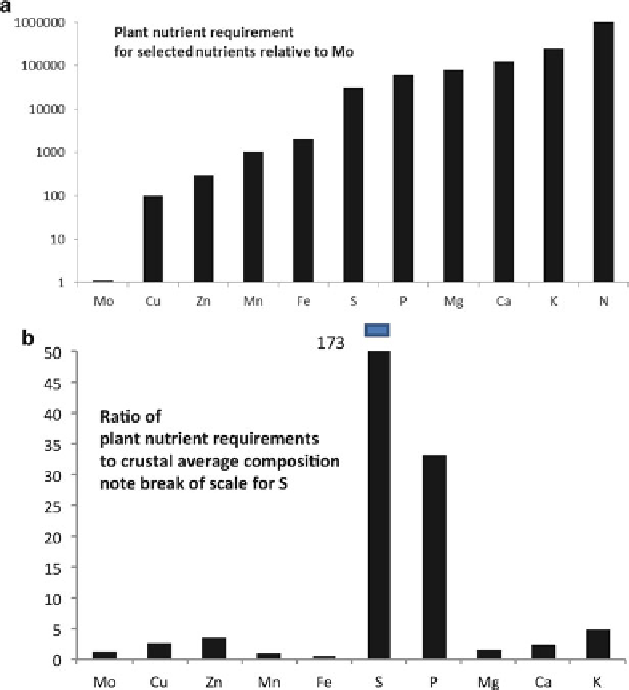Geoscience Reference
In-Depth Information
Fig. 14.1
(
a
) Terrestrial plant nutrient requirements for selected key nutrients relative to Mo
(Epstein
1972
). (
b
) Ratio of terrestrial plant nutrient requirements from 1a to average crustal rock
abundance (Rudnick and Gao
2003
); note break in scale for S
uncertain and variable with other factors such as the specific plant species involved,
their growth phase and the availability of other nutrients, they can still be useful.
Ignoring at this stage the bioavailability of elements within crustal material, this
nutrient requirement can be compared to the average total abundance of elements
within the crustal material (Rudnick and Gao
2003
) from which soils are derived,
recognising that this composition varies between different rock types. Such a
comparison allows us to consider the relative scale of the potential supply of these
elements from parent rock material to plant nutrient requirements and hence which
elements are more likely to be limiting to primary production. This comparison is
illustrated in Fig.
14.1
b which emphasises that crustal material (including dust) is
very deficient in S and P relative to plant requirements. Nitrogen and carbon are not
illustrated because of their low and variable crustal composition and also because

Search WWH ::

Custom Search